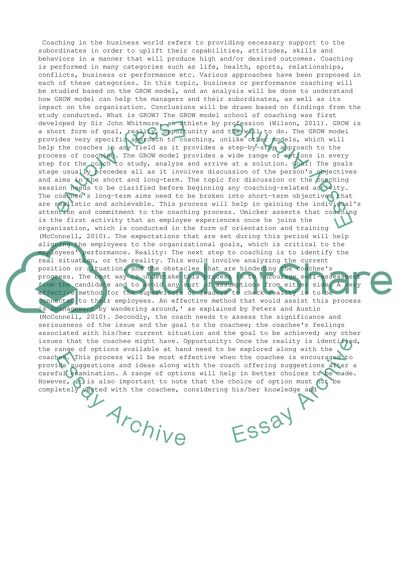Cite this document
(“GROW Model of Coaching Research Paper Example | Topics and Well Written Essays - 1500 words”, n.d.)
Retrieved from https://studentshare.org/management/1463285-grow-model-of-coaching
Retrieved from https://studentshare.org/management/1463285-grow-model-of-coaching
(GROW Model of Coaching Research Paper Example | Topics and Well Written Essays - 1500 Words)
https://studentshare.org/management/1463285-grow-model-of-coaching.
https://studentshare.org/management/1463285-grow-model-of-coaching.
“GROW Model of Coaching Research Paper Example | Topics and Well Written Essays - 1500 Words”, n.d. https://studentshare.org/management/1463285-grow-model-of-coaching.


